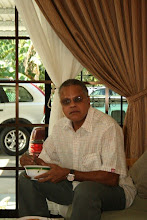Luckily only two modes of treatment is available for treatment of AF. The pendulum has swung from one to another in the last 10 years or so. Read on...
Over the past decade, the thought of converting atrial fibrillation to sinus rhythm to improve outcomes no longer has currency. For years we worked hard to convert from atrial fibrillation and maintain sinus rhythm. We used a variety of anti-arrythmics, many of which proved to actually be proarrhythmic.
Today we teach rate control and anticoagulation as first line therapy. We only revert to cardioversion when the patient has symptoms which cardioversion resolves.
This represents a major paradigm shift. The current article in NEJM should end the controversy. CHF patients remained the one patient population that cardiologists "knew" would benefit from sinus rhythm. After all, our teachers explained that the atrial kick provides around 15% of the eventual stroke volume. But this study shows that the atrial kick does not really matter to patients.This study concludes that in patients with AF and Heart failure , a routine strategy of rhythm control does not reduce rate of death from cardiovascular cause as compared to rate control strategy.
In the same NEJM reports a study when the new anti arrhythmic drug dronedarone worsens heart failure and increases mortality when used in patients with heart failure. Editorial concludes that that rhythm control AF in heart failure has on set back after another.
Over the past decade, the thought of converting atrial fibrillation to sinus rhythm to improve outcomes no longer has currency. For years we worked hard to convert from atrial fibrillation and maintain sinus rhythm. We used a variety of anti-arrythmics, many of which proved to actually be proarrhythmic.
Today we teach rate control and anticoagulation as first line therapy. We only revert to cardioversion when the patient has symptoms which cardioversion resolves.
This represents a major paradigm shift. The current article in NEJM should end the controversy. CHF patients remained the one patient population that cardiologists "knew" would benefit from sinus rhythm. After all, our teachers explained that the atrial kick provides around 15% of the eventual stroke volume. But this study shows that the atrial kick does not really matter to patients.This study concludes that in patients with AF and Heart failure , a routine strategy of rhythm control does not reduce rate of death from cardiovascular cause as compared to rate control strategy.
In the same NEJM reports a study when the new anti arrhythmic drug dronedarone worsens heart failure and increases mortality when used in patients with heart failure. Editorial concludes that that rhythm control AF in heart failure has on set back after another.



0 comments:
Post a Comment